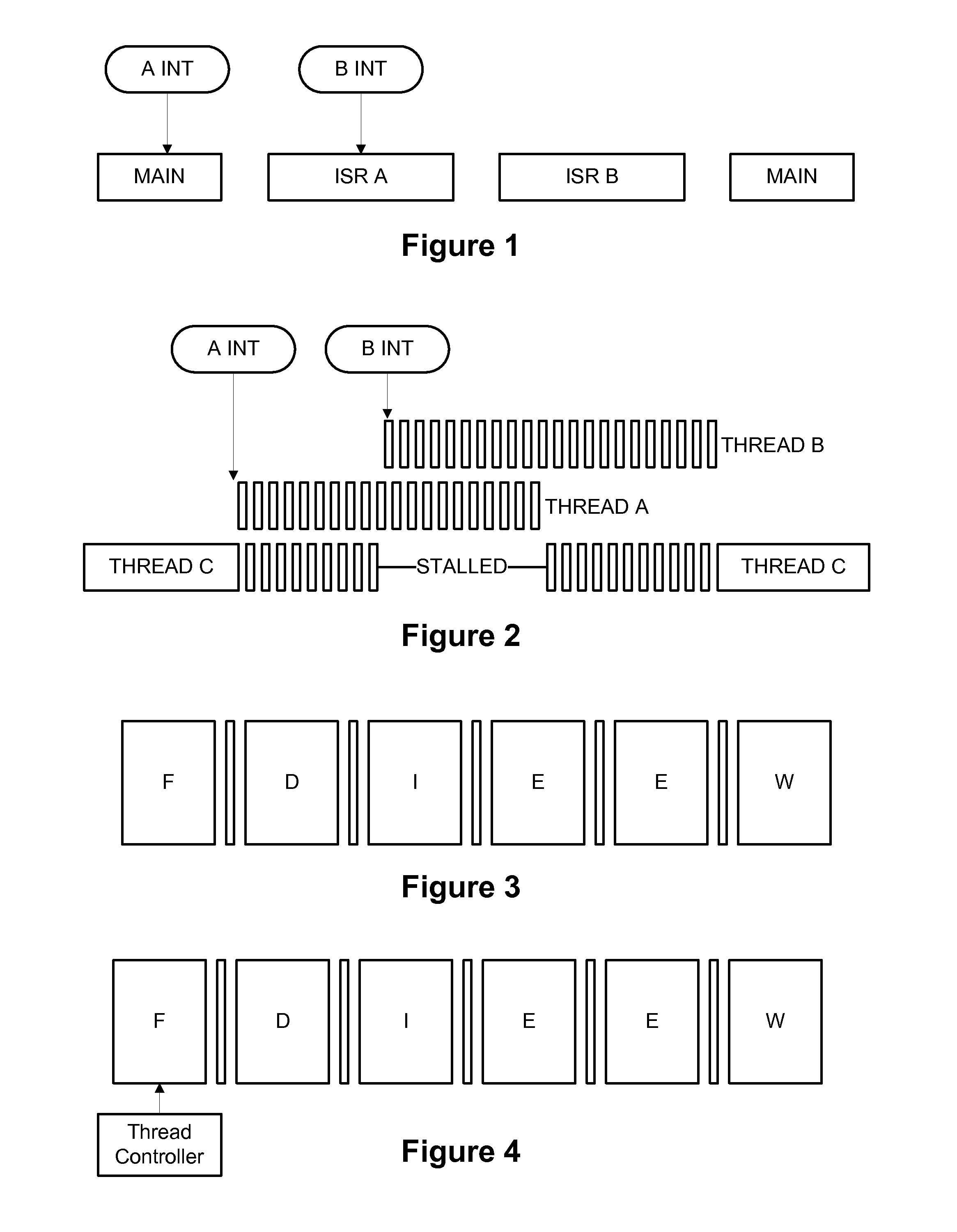Instruction-level multithreading according to a predetermined fixed schedule in an embedded processor using zero-time context switching
instruction-level technology, applied in the field of instruction-level multithreading according to a predetermined fixed schedule in an embedded processor, can solve the problems of reducing the effective processing speed of the cpu, reducing the performance of the processor, and often insufficient registers for a desired processing task
- Summary
- Abstract
- Description
- Claims
- Application Information
AI Technical Summary
Benefits of technology
Problems solved by technology
Method used
Image
Examples
Embodiment Construction
[0044]A preferred embodiment of the present invention is now described with reference to the figures where like reference numbers indicate identical or functionally similar elements. Also in the figures, the left most digit of each reference number corresponds to the figure in which the reference number is first used.
[0045]The present invention is a system and method that solves the above identified problems. Specifically, the present invention enables multithreading in a embedded processor, invokes zero-time context switching in a multithreading environment, schedules multiple threads to permit numerous hard-real time and non-real time priority levels, fetches data and instructions from multiple memory blocks in a multithreading environment, and enables a particular thread to store multiple states of the multiple threads in the instruction pipeline.
[0046]The present invention overcomes the limitations of conventional embedded processors by enabling multiple program threads to appea...
PUM
 Login to View More
Login to View More Abstract
Description
Claims
Application Information
 Login to View More
Login to View More - R&D
- Intellectual Property
- Life Sciences
- Materials
- Tech Scout
- Unparalleled Data Quality
- Higher Quality Content
- 60% Fewer Hallucinations
Browse by: Latest US Patents, China's latest patents, Technical Efficacy Thesaurus, Application Domain, Technology Topic, Popular Technical Reports.
© 2025 PatSnap. All rights reserved.Legal|Privacy policy|Modern Slavery Act Transparency Statement|Sitemap|About US| Contact US: help@patsnap.com



